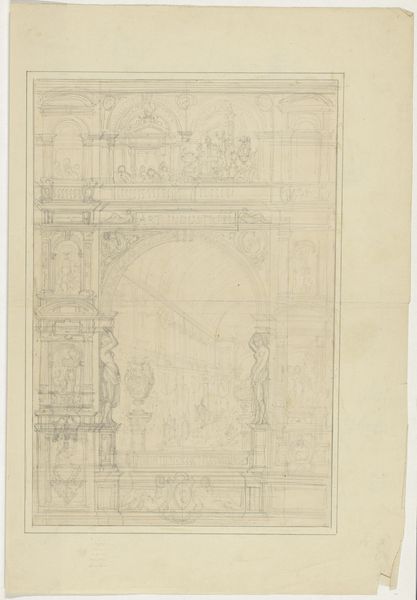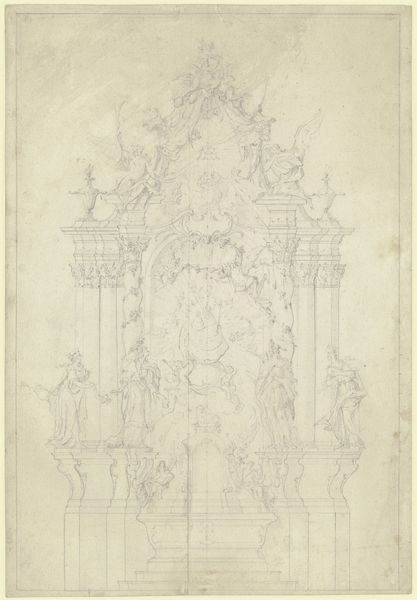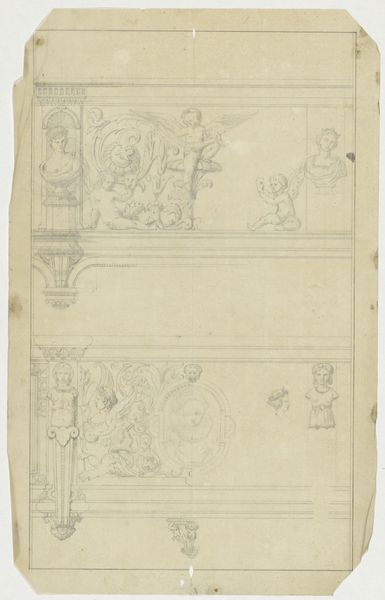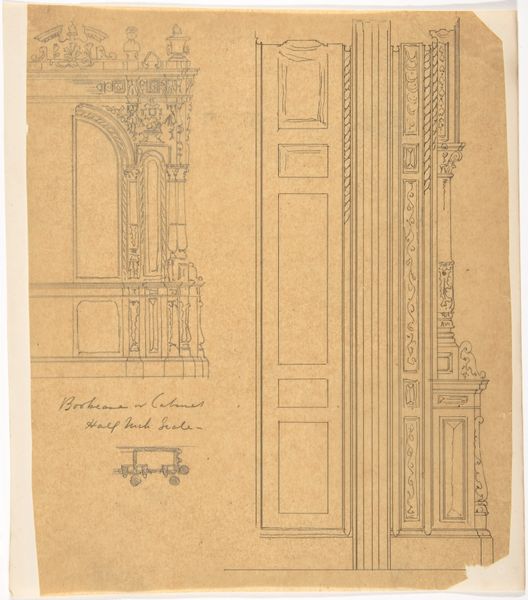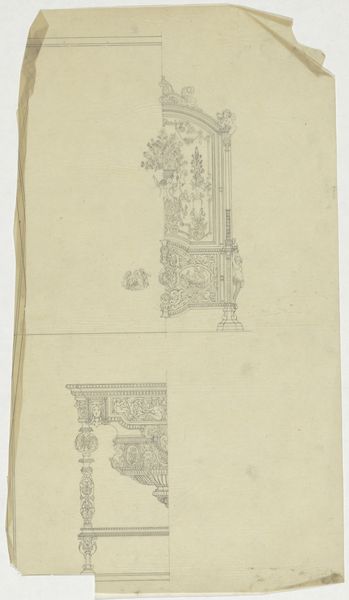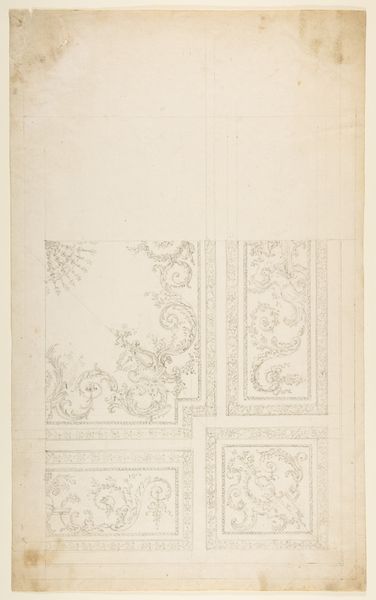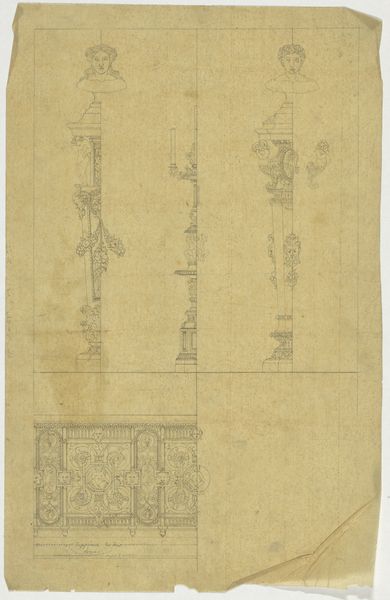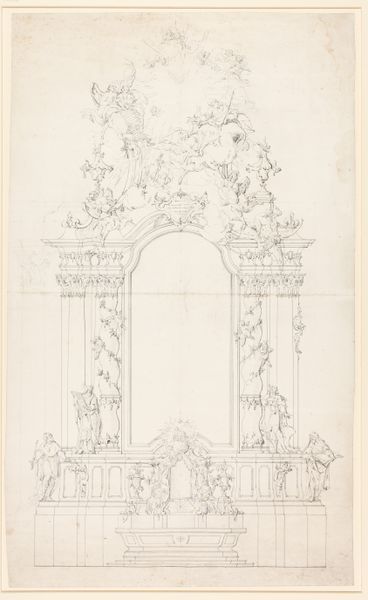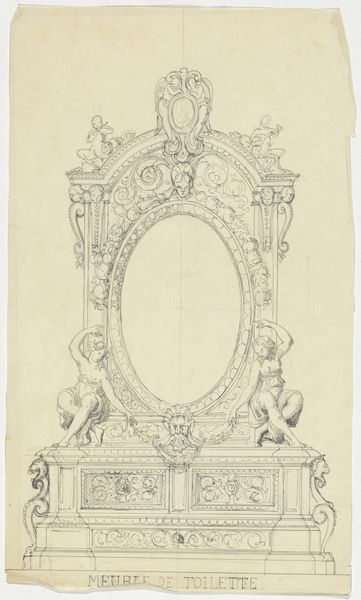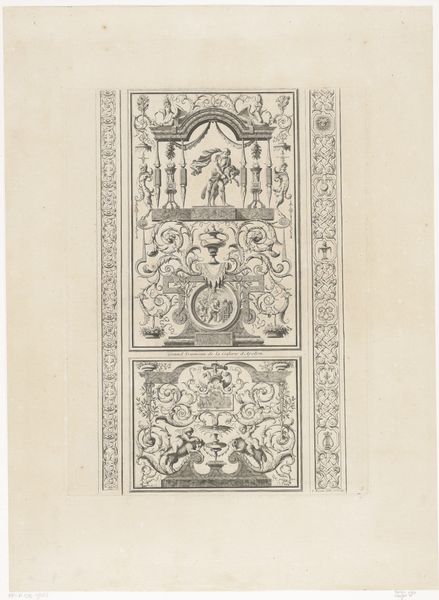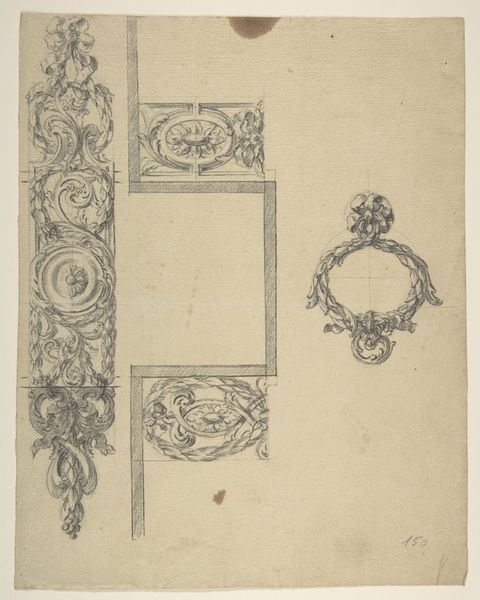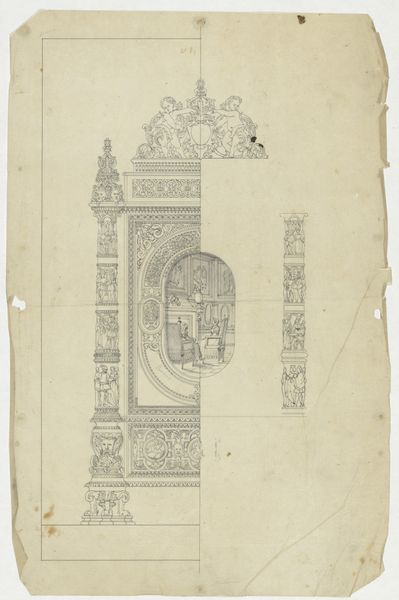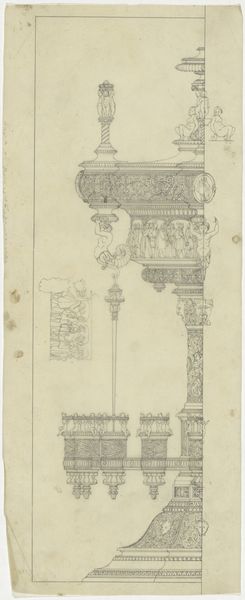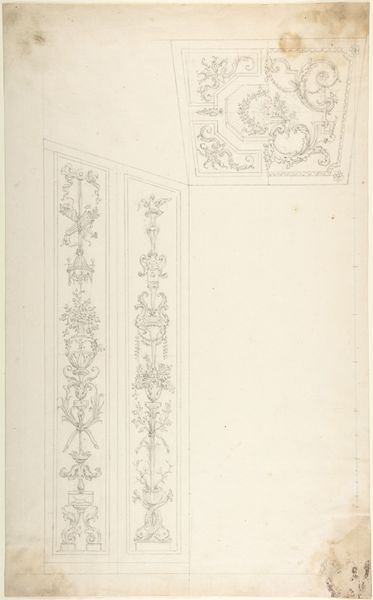
drawing, paper, pencil, architecture
#
drawing
#
landscape
#
paper
#
form
#
pencil
#
architecture
Dimensions: height 232 mm, width 375 mm
Copyright: Rijks Museum: Open Domain
Curator: Looking at this pencil drawing entitled "Facade met schoorsteenmantel," or "Facade with mantelpiece," made circa 1830 to 1850 by Firma Feuchère, I’m immediately drawn to the delicacy and precision of the lines. It feels almost ghostly, a forgotten blueprint of grandeur. Editor: I find myself curious about the socioeconomic context that spurred the commission of such elaborate design drawings. What kind of clientele would be in the market for these intricate decorations and where were they manufactured? Curator: Given Firma Feuchère’s renown during that period, it’s safe to assume these drawings were intended for wealthy bourgeois families, seeking to elevate their domestic sphere to emulate aristocratic styles. The drawing itself shows the proposed mantelpiece's composition; it includes figural supports and delicate floral details. Editor: I’m also fascinated by the interplay of classical motifs rendered in such a subdued medium, and it speaks to shifts in taste. It shows the architectural designs becoming accessible. Curator: Absolutely, there's an inherent tension between the implied opulence of the design and the humility of the drawing materials, a sheet of paper and a graphite pencil. You get the sense that we’re peering into a world on the cusp of industrialization and the shifting societal norms, which is highlighted when looking at its materiality. Editor: The scale of the undertaking too; those figures flanking the fireplace... their pose reflects labouring status. What was it like to produce this piece? Were these atelier settings oppressive? Curator: A close look reveals how each element, from the volutes to the cornices, bears the trace of hand craftsmanship, something that sets it apart from the machine-produced ornament that would soon become prevalent. It invites you to consider the labour involved in transforming raw materials into expressions of social status. Editor: Ultimately, the design holds up even when translated to mass production methods of our time. The symmetry and proportions give the space formality and balance. I suspect this composition choice contributes to why the artist's architectural language transcends centuries. Curator: I completely agree, the careful attention to formal arrangement contributes to the artwork's enduring appeal, inviting us to ponder themes of identity, status, and aesthetic sensibilities. Editor: Precisely, by carefully considering the role of labor and artistic expression within the frame.
Comments
No comments
Be the first to comment and join the conversation on the ultimate creative platform.
